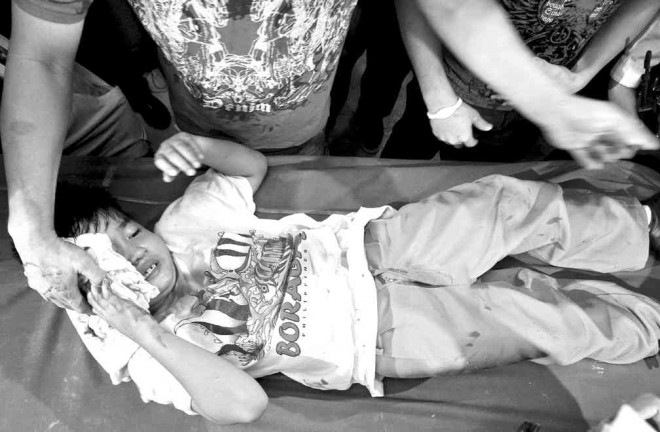DOH: Don’t risk lives over firecrackers
MANILA, Philippines–After the last “Big Bang,” over a thousand people were hospitalized, with 25 of them ending up as amputees and nearly 150 injuring their eyes.
With these alarming figures, health officials renewed the campaign warning parents and guardians against giving children easy access to firecrackers during the holiday merrymaking.
Saving children from firecracker-related injuries and death should be a shared responsibility of the parents, community and the authorities, said Dr. Lyndon Lee Suy, the Department of Health (DOH) spokesman.
“If kids are difficult to dissuade from playing with firecrackers, I guess adults should be responsible enough to address this concern. Imagine, these kids will grow up without hands, forearms or legs after losing them to fireworks. It will be difficult for them to return to school and their productivity as well as self-esteem will be affected,” Lee Suy said at the launching of the DOH’s “Iwas Paputok” program on Thursday.
This year’s campaign theme is “Mahalaga ang buhay, iwasan ang paputok” (Life is precious, avoid firecrackers).
Article continues after this advertisement“Adults play a big role in ensuring the safety of children. They should act immediately the moment they see these kids play with firecrackers,” Lee Suy said.
Article continues after this advertisementBut for those who cannot stop the urge to light a firecracker, the DOH advice for them is to seek immediate medical treatment once they are injured to prevent infections which may lead to death. “No matter how small the injury is, go to the hospital and let the doctors decide on what should be done to your injury to prevent infections,” Lee Suy said.
He said the piccolo, a small tubular whistling firecracker that has been declared illegal, remains the top injury-causing firecracker.
It is popular among children because it is the most readily available in neighborhood stores and is easy to ignite. The firecracker can be lit by merely scratching the gunpowder-laden stick against the box it comes in.
In many cases, however, the piccolo explodes in the hand before it can be thrown.
In a statement, Acting Health Secretary Janette Garin encouraged the public to use alternative noisemakers to welcome the New Year like blowing paper horns or “torotot,” honking car horns and playing loud music.
She also encouraged the holding of neighborhood street parties, concerts and parlor games with family members.
“There are other means to celebrate than exploding firecrackers and lighting fireworks. It is not worth risking losing lives and limbs.”
Garin noted that during the 2013 holiday season, there were 1,018 firework-related injuries recorded.
This was nine percent higher compared to 2012.
The 2013 figures, covering the period Dec. 21, 2013, to Jan. 5, 2014, came from 50 sentinel surveillance hospitals.
Of the 1,018 figure, 997 came from fireworks injuries, 19 from stray bullets, and two from firecracker ingestion.
Of the 997 fireworks injuries, 25 were sustained blast wounds that required amputation and 843 were blast cases that did not require amputation. The remaining 147 involved eye injuries.
The top fireworks types that were involved in injuries were the piccolo (38 percent), kwitis (11 percent), five-star (5 percent) and plapla (4 percent). Piccolo, five-star and plapla are prohibited.
